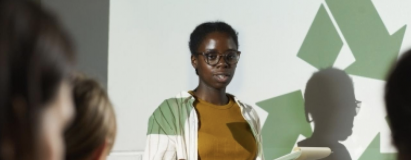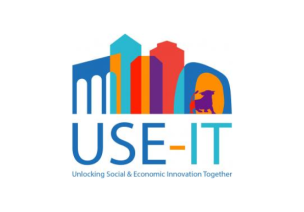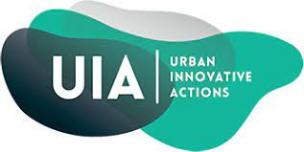-
-
-
België
-
Shifting mindsets to involve local communities in urban regeneration
United KingdomBirminghamAppointing community representatives amongst the residents of the target area Edgbaston Reservoir, to become permanent ambassadors, communicating with the City Council, and understanding their challenges – enabling Birmingham in this way to rebuild trust
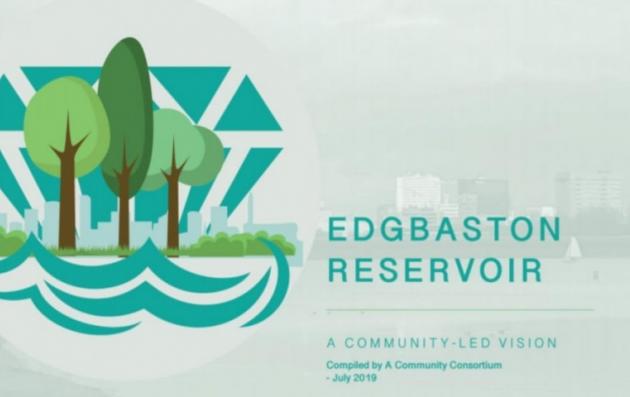
- Local economy
- Urban planning
Copy linkFacebookXLinkedInEmail1 140 000Summary
Birmingham’s population is growing rapidly: a predicted 80 000 more homes will be needed by 2032. However, when drastic national austerity measures were introduced after the 2008 financial crisis, severe budget cuts led to a 50% cut in Birmingham City Council’s (BCC) workforce. The Regeneration Team was among the first to be disbanded.
From 2010 nearly all regeneration projects stopped – apart from ‘housing renewal’, which is driven by private developers and focused on capital investment, with little funding for associated social projects. Little space was left for social experimentation or risk-taking.
In 2017, an Urban Innovative Actions-funded project ‘USE-IT’ enabled a fresh approach, with an innovative partnership adding ‘human-centred’ interventions to a housing Master Plan. The new approach was continued with further innovations in the course of the URBACT URBAN REGENERATION MIX transfer network.
The focus of the Birmingham case is on improving the ways the local authority is communicating with their inhabitants. The goal is to promote inclusive growth in priority neighbourhoods. Given the 50% cuts in central government financing of local authorities in the UK, for the Birmingham Council the most important element in regeneration is what and how to finance, so that the competences of the communities become strong enough to be able to operate self sustaining actions, no longer needing permanent financial support from the public side. The city is very concerned by the results/impact of the actions, wanting to know if the few financial resources left have had a real effect in the communities. To achieve all these goals the role of mediators was further strengthened and extended with new tasks and responsibilities.
Solutions offered by the good practice
Whilst in Łódź a city administration mediator works with the community during the regeneration process, Birmingham went a step further, appointing community representatives in the target area – where some had lived for decades. Once trained, they become permanent ambassadors, communicating with the City Council, and understanding their challenges. This enabled Birmingham to rebuild trust in a community who had previously opposed all council plans.
The role of the mediator (based in an NGO), as a link to the city, through the improvised role of the area manager (employed by the city) has proved to be a key element, giving real space to the participative process, putting aside professional intermediaries, as the “speed of trust” shared by the residents should at all costs be upheld. The same mediator, in the need to guarantee sustainability has become the CEO of a community enterprise in the local area and has led the coordination of the ULG with great success.
Sustainable and integrated urban approach
The project introduced a Community Economic Development Planning (CEDP) approach, encouraging local economic development that generates human wellbeing. The power to drive change rests within the community of residents, local businesses, and local service providers including councils, community groups and voluntary sector organisations with a direct stake in the area’s economic health.
Integrated management is a big challenge to all public bodies. It’s been particularly inspiring for Birmingham to see changes introduced by Lodz. The cross-departmental approach of Lodz proved to be very inspiring to Birmingham in building up the localism agenda. In 2019 a delivery unit for the East Birmingham Inclusive Growth Strategy has been established and the structure of this has been modeled on the Lodz Regeneration Team. It is a multi-disciplinary team and aims to link several BCC departments with the city-region administration (West Midlands Combined Authority) – its remit is to support the regeneration of the area and foster inclusive economic development. The main purpose is to involve communities and include them in the redesign process of their neighbourhoods to make sure that the benefits of the development are felt where they are needed the most.
Participatory approach
Setting up an URBACT Local Group (ULG) proved a very powerful mechanism” to significantly improve the city’s engagement with residents. The council forged new links with members of the community – and put the ULG in their hands. This successful community leadership around Edgbaston Reservoir has provided a powerful catalyst for the local authority’s Housing and Planning teams to alter their approaches for future regeneration projects, fully embracing the principles of inclusive growth, involve communities in the co-creation of the local master plan. This is seen as a wider work on culture and policy change and it is still on-going, based on the example of implementation within Urban regeneration Mix, which will be replicated elsewhere within the city (East Birmingham).
What difference has it made
Within the Community Economic Development Planning (CEDP) approach, encouraging local economic development Cooperation with the local community, the original idea was to bring a local sports field back to community use. In talks with the City Council, residents ended up creating an alternative, which led to co-producing an alternative Community-Led Master Plan for the whole Reservoir – instead of campaigning against plans that did not necessarily meet their needs.
Through applying the integrated management model observed in Lodz, Birmingham City Council introduced similar solutions – setting up the Rapid Policy Unit for East Birmingham combining three local authority and creating a powerful body that would work on the regeneration of East Birmingham breaking silo working between directorates and service areas.
Transferring the practice
Birmingham was one of the six cities adapting the Lodz URBACT Good Practice within the framework of the Urban Regeneration Mix Transfer Network. Not having the financial means which were available for Lodz (predominantly Structural Funds resources), in the course of the transfer process Birmingham changed significantly the original model of mediators. The essence of the change was to empower community representatives to become mediators. The idea of the community connector role is a further development of the original Good Practice, with motivating and inspiring small groups of inhabitants to take bottom-up actions, building in them a sense of community and responsibility for the space and the neighbors with whom they share it.
The experience from the Edgbaston Reservoir is already being rolled out across wider East Birmingham with a population of over 240 000. A multidisciplinary team has been set up to deliver a newly launched 20-year East Birmingham Inclusive Growth Strategy modelled on the Łódź Regeneration Team. This enables several city departments to work together with the city-region administration and, crucially, communities will be included in the redesign of their neighbourhoods. So, the benefits of redevelopment will be felt where they are needed most.
Emailkarolina.medwecka@birmingham.gov.uk -
A card to simplify smart access to local services
PortugalAveiroDigitalisation for more efficient municipal policies
 Aveiro had already been on the way towards more digitalisation for quite some time when it received the opportunity to benefit from the experience of Gijon and to transfer its practice of a citizen card: a card simplifying local services, while unifying them under a unique physical support. After having introduced a common card for all students, the municipality also developed new online services and is envisaging to develop even more.Copy linkFacebookXLinkedInEmail78 000
Aveiro had already been on the way towards more digitalisation for quite some time when it received the opportunity to benefit from the experience of Gijon and to transfer its practice of a citizen card: a card simplifying local services, while unifying them under a unique physical support. After having introduced a common card for all students, the municipality also developed new online services and is envisaging to develop even more.Copy linkFacebookXLinkedInEmail78 000Solutions offered by the good practice
Aveiro is an industrial city with an important seaport on the western coast of Portugal and also known as ‘the Portuguese Venice’. More recently, it has become known as a digital cluster, a territory of innovation with a strong knowledge economy, dynamic university, centre for telecoms R&D, and innovative firms in the digital and traditional sectors. However, the increasing development of new digital solutions had created a complex system of providers, interfaces and information sources for various services around the city, which was increasingly hard for local people to navigate.
The Municipality has been wanting to simplify citizens’ access to public services and transform Aveiro into a smarter, more open, resilient and inclusive society. In 2018, it launched an Urban Innovative Actions (UIA) project ‘Aveiro STEAM CITY’, supporting the adoption of 5G and Internet of Things (IoT) technologies.
Aveiro has started by introducing a common card for all students across its different schools. All services provided by the municipality and schools can be managed and paid with it. This includes the cafeteria, school supplies, photocopying, even access to the buildings and school-day extensions. Crucial preparatory actions included mapping different systems to ensure compatibility and ease of use.
Almost simultaneously, the Municipality also activated new online services, with a wide range of options. Different linkages, payments loading, single sign-in and a number of other key elements discussed in Card4All are already in place.
Sustainable and integrated urban approach
The integrated approach supported by the ULG has been particularly valuable in helping the work with CARD4ALL fit into Aveiro’s constellation of ongoing projects, creating synergies and building on existing policies.
In addition, the services provided via the card clearly relate to environmentally friendly solutions such as a public transport. It can also potential include social benefits directly into the card.
Participatory approach
To reach this point, Aveiro and its stakeholders exchanged regularly with fellow partner CARD4ALL cities, and learned directly about Lead Partner Gijon’s Citizen Card system, including technical tools required for its development. This has already informed key elements of Aveiro’s new online public services and the emerging citizen card plans.
Local developments have been coordinated with an URBACT Local Group (ULG) comprising two different groups of stakeholders. The first engages all existing service providers on a practical, technical level. The second is a municipal cross-departmental group linking with wider economic development activities.
The network and the wider activities enjoy strong support from local politicians – and a clearly identified demand from citizens.
What difference has it made
Based on the practice of Gijon, the municipal departments are still working together to create a broader citizen card system covering almost all sectors of local life, including: mobility (bikes, buses, ferry, parking…); education and sports; culture (libraries, museums, theatre…); tourism; IT; and ‘the front office’ that deals directly with citizens. Each department acts as an intermediary with their own external service providers and concession holders, encouraging strong cross-sectoral cooperation. The card’s success in the future will require technical capacity, financial and human resources – including a municipal team of ICT developers and technical experts – which is not always easy to maintain in Portuguese municipalities.
Transferring the practice
The transfer journey has been demanding but rich. As a direct outcome, despite all ongoing challenges, the city is now working with more public service providers to add the library, museums, bus and bike sharing system to a new citizen card, further simplifying life for residents.
-
The 10 Good Habits for education innovation
SwedenHalmstadEnriching the education system with local partnerships
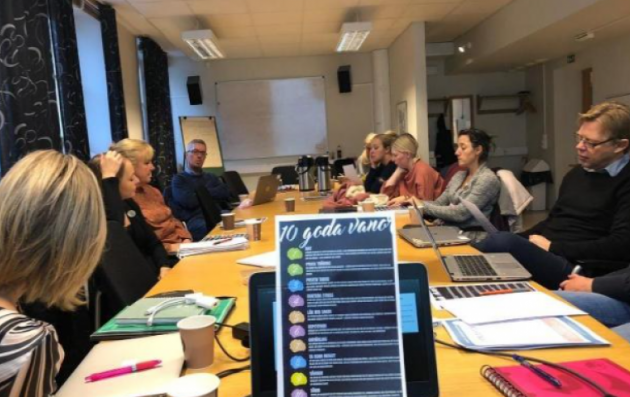
- Social cohesion
The Swedish city of Halmstad has adopted the “The 10 Good Habits”, a novel approach to education to enhance participation across institutions, families and private partners concerned in the pilot project.[1] This experience is inspired by the URBACT ON BOARD Transfer Network for the creation of an Education Innovation Network (EIN). Following the Lead Partner Viladecans (Spain), Halmstad has engaged in forming its own version of a Education Innovation Network (EIN) in a pilot area, the School Area North in the Oskarström neighbourhood.Copy linkFacebookXLinkedInEmail
[1] The 10 Good Habits approach has been developed by a local consultancy, Hjärnberikad, in cooperation with neuroscience researchers. The concept focuses on effective brain health and provides knowledge and tools for a sharpened everyday life. The Good Habits focus on: Food, Physical training, Positive thinking, Handling stress, Learning new things, Repetition, Variety, Decision-making, Friends, Sleep.
https://hjarnberikad.se/10-goda-vanor/100 000Solutions offered by the good practice
Halmstad is a fast-growing town on Sweden’s west coast: a port, but also a university, industrial and recreational city. The local education system rarely cooperated actively with local companies, organisations, or even parents. Rather, it was strongly managed by municipal departments guided by national rules. Typically for Sweden, local families were involved in children’s sports clubs, but much less so in schools. The opportunity offered by ONBOARD network was to adopt the Education Innovation Network (EIN) approach to modernise education curricula through digital technologies at different ages and stages of learning, to provide pupils with the necessary skills to enter the job market.
The city of Halmstad, which has already been working together with Viladecans since 2014 on a project called IMAILE, in 2018 engaged in transferring the Spanish city’s good practice involving multidisciplinary and multi-sector stakeholders for the EIN creation. The EIN is a cooperative structure that brings together public administration, education centers, professionals, families, and enterprises.
With the EIN, Halmstad hoped to deliver short-term improvements such as calmer classrooms, but also longer-term benefits in terms of preparing future professionals and citizens. The success of the extensive cooperation among partners led to modifying the educational curricula and creating a new teaching approach by adding technologies and involving the parents.
Among the activities developed we can find:
- “Happy Braincells”: the objective of the project was to give fifth graders an educational package consisting in games, readings and group presentation to give them more knowledge about health factors and the 10 Good Habits.
- “Stroller Walks”: based on the “Movement” good habit, the students were given a topic which they discussed during walks. When they came back, teachers collected their thoughts in the classrooms. The project entailed the participation of parents.
- “Increased Learning”: collaboration between training schools, teacher training students, Halmstad University, and the school librarian to increased learning and promoting good reading habits;
- Young people influence in local society: collaboration between the municipality and the Oskarström neighbourhood community to get students to be more active and politically mobilized.
The project was also to implement good practices in everyday’s lessons, e.g. beginning classes by looking back at the previous class (repetition), or mindfully understanding the positive thoughts that reaching a goal brings.
Sustainable and integrated urban approach
To enhance the work and results of ON BOARD, Halmstad’s city council created across its departments four clusters, meant to share interests and work on topics of Care and Support, Education and Learning, Growth and Attractiveness, Infrastructure. The aim of the clusters is to enhance an integrated approach in which communication within the municipality is improved.
Halmstad is committed to continuing the work to enhance education innovation in collaboration with community stakeholders. The city recognizes that in order to continue and expand the work, the municipality will need to organize and delegate, but also continue to transform the municipality’s different departmental boundaries.
The city has also identified further necessary improvements to build on the progress made so far, concerning communication within the municipality, within departments and schools units and the community.
Participatory approach
Learning from Viladecans’ Good Practice, EIN in Halmstad ment involving parents, public administration, local businesses, sports clubs in a brand-new participatory approach.[1]
The city started by taking an inventory of local stakeholders and identifying a first pilot area to trial the EIN approach, the School Area North – one of the five different areas in the city’s educational map.
After creating a Coordination Team and an Urban Local Group (ULG) coordinator at the municipal level, the town then formed five Focus Groups based on the 10 Good Habits to improve students’ brain power and overall well-being.
Each Focus Group involved a mix of relevant stakeholders and started making projects with the School Area North to add different activities in the schools’ curricula based on the 10 Good Habits. The purpose was to further the students’ knowledge on the good habits for mental health so that they would continue practising them in the longer term, eventually in their working lives.
[1] 13 schools, 389 teachers and principals, 996 students, 100 families, 10 companies, 2 universities, 10 local entities, 1 mayor, 1 councilor, 20 people from the municipal staff.
What difference has it made
By transferring and adapting Viladecan’s good practice, Halmstad has successfully achieved many objectives. It has reinforced the city’s social sustainability goals (schools working together with other schools, authorities and civil society), improved cooperation between the two municipal Education Departments (Primary and Secondary Level), increased resources from one of its educational departments (allocated to a new person for the Educational Innovation Network projects in School Area North), nurtured a forum that enables to plan, implement and evaluate joint work, created new collaborations to develop an health-aware perspective in Oskarström (the “Happy Brain cell” project and the “Stroller Walks” to engage with parents from a very early stage).
After the ONBOARD Transfer Network project, Halmstad detected four main outcomes:
- The Educational Innovation Network will continue, and new human resources and municipal budget will be allocated;
- Communication between the schools and the local stakeholders has significantly improved;
- The environment in the classrooms detected to be much calmer than at the start of the project;
- Plans for expanding the Good Practice to other parts of the city will be developed.
Transferring the practice
The ONBOARD Transfer Network was led by the city of Viladecans and involved, apart from Halmstad, Tallinn (Estonia), Poznań (Poland), Albergaria-a-Velha (Portugal) and Nantes (France).
After the transnational meetings of ONBOARD in 2019 all the Project Partners signed a Policy Declaration in which they outlined their cities’ stance on education and educational innovation and the role that local governments could play.
The progress of Halmstad transfer project has been affected by the disruption of Covid-19 in 2020, but it managed to adapt to the pace of current circumstances and engage in “digital mode” activities, improving its digital skills for organising and teaching over the Internet.
-
Creation of a new NGO platform
SloveniaIdrijaThe new ‘Towns’ Living Room’, established by the municipality in a vacant building, involves the heads of the city administration, active citizens, social services, development agency, public library and nursing home, local clubs and various associations
Copy linkFacebookXLinkedInEmail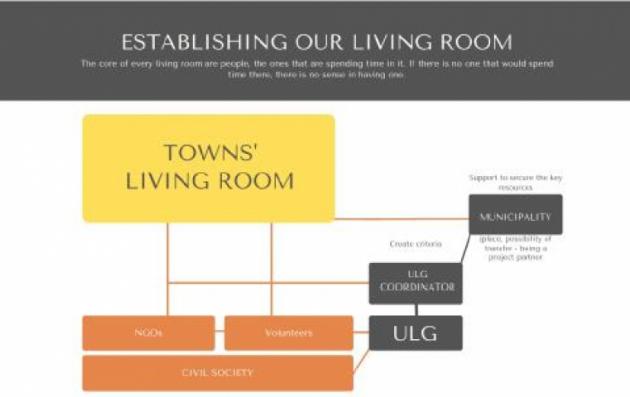 11 800
11 800Idrija, is a small former mercury mining and industrial town set in the Alpine foothills, which has developed into an important global and regional node with a growing economy. Even so, Idrija displays classic shrinkage dynamic. The long-term decline of the population due to low birth rates and out-migration is 2,5% and by 2028 the total population is expected to be around 11.000.
In 2016, Idrija participated in the URBACT City Centre Doctor Network, producing an Integrated Action Plan to revive the town centre. This included an idea for a new community centre.
Idrija already had various local NGOs, a youth centre and a multi-generational centre in a retirement home, but each was relatively focused on its own agenda. The municipality was looking for a solution that would connect people, enable them to make decisions together, give them feeling of being part of the community and open new possibilities. The opportunity for a solution came with the Altenas’ good practice, more precisely with the NGO platform ‘Stellwerk’.
Solutions offered by the good practice
Fostering the engagement of inhabitants who are not in paid employment but have access to skills and resources to help support those in need, builds the capacity of civil society to engage with often complex social problems in a structured way. Altena founded its NGO platform in 2008 and called it Stellwerk. The Stellwerk started without a budget. The municipality made available premises, paid the energy and cleaning bills, provided a minimum of administrative resources. Currently the Stellwerk has 8 volunteer workers who co-ordinate several hundred volunteers providing disability support, arts and music groups, home visiting and home care services, refugee integration and much more. The Stellwerk provides an essential channel of communication between civil society and municipality.
In February 2020, Idrija launched its new ‘Towns’ Living Room’: the municipality offered a vacant building to house a small ULG involving the heads of the city administration, active citizens, social services, development agency, public library and nursing home, local clubs and various associations.
The ‘Towns’ Living Room’ links organisations with interested citizens if needed, but it is a “by the people for the people’’ model. Activities have already included events on housing and building refurbishment, chess classes, evening of poetry, book presentation, reading of fairy tales for children, knitting evening to raise breast cancer awareness and many more. It hosts services, such as a municipality supported volunteer based free transport service for elderly people and a book corner provided by the local library.
Sustainable and integrated urban approach
For successful transfer of good practice, it connected and established cooperation across different departments of a municipality. As well as also it strengthened the connection between local actors, NGOs and municipality.
With the practice based on ‘people to people’ approach it also improves the quality of design and implementation of smaller local actions.
Good practice works when there is trust established between all different parties – municipality, NGOs/volunteers, institutions and citizens.
Participatory approach
The practice is based on people, NGOs, volunteers that are encouraged by ULG. The coordination between all the elements was done by ULG coordinator. It includes all important stakeholders and interested citizens which is essential part of success of a practice based on ‘’people to people’’ approach. It uses bottom-up approach which leads to that people actually want to be part of good practice and want to give to community because they are having opportunity to fulfil their wishes and they actually have a say in what will happen.
What difference has it made
After official opening of the premises of the NGO platform (the "Towns living room’’) volunteers started to turn up. Ideas are coming in all the time which means that people are actually engaging and doing things on their own. There is also a wide acceptance now in public. At the start there were a lot of opinions about "just another project’’ and now those opinions are different and more in a way "we really needed that’’ "it is nice to have a place where we can do something’’. A lot of ideas are already on the list to do, and everyone is more confident now. With less Covid-19 restrictions the "Town living room" was able to open up again which resulted in a rich monthly program with different activities organized as well as giving people a place to hang out a bit without organized activities.
Transferring the practice
Idrija was one of the seven European cities (besides Manresa Spain, Igoumenitsa Greece, Isernia Italy, Melgaço Portugal, Aluksne Latvia, Nyírbátor Hungary) of the Re-grow City Transfer Network, led by Altena, Germany, to transfer the URBACT Good Practice of Altena on finding opportunities in declining cities. Some of the cities were transferring the NGO platform while others the Pop-up shops.
This good practice has also been chosen as one of 5 URBACT National Practice Transfer Initiatives (NPTI) and will be transferred to 6 other Slovenian municipalities. The project is led by Slovenian NUP, with Tina Lisac as national expert.
Equipped by URBACT with a toolkit, the cities could learn from the good practice and also from each other.
Re-grow City deliberately focused on small and medium sized towns, because they face distinctive challenges in terms of constrained resources and limited technical capabilities when compared to larger cities. These constraints offer opportunities, however, for example robust social networks with high levels of ‘social capital’ and short decision making routes that speed up the adoption of untested or controversial methods. Taken together with the resources and skills local people have, shrinking cities are places of opportunity and can demonstrate considerable resilience even where they face severe constraints.
As a side-outcome of the Re-Grow City network, in May 2021 the new pan-European network ReGrow Towns has been established. This is aimed for towns below the size of 50 th residents and is an addendum to the already existing networks of Eurocities (cities above 250 th residents) and Eurotowns (cities between 50-250 th residents).
-
Arts and culture driving climate activism
ItalyMantovaYou can act for climate in a different way than you thought of
Copy linkFacebookXLinkedInEmail 47 999
47 999Building on the experience of Manchester’s Good Practice, Mantova has established ARC3A a new group for arts and culture sector collaboration on climate working closely with the city, designed and implemented climate-themed cultural activities to raise awareness about climate emergency and act to mitigate its effects and a range of sector support and policy measures to frame and drive sector action on climate
Solutions offered by the good practice
The small town of Mantova is a UNESCO World Heritage Site with fine architecture, which has a thriving creative scene and hosts hundreds of cultural events, including Italy’s most important literature festival. At the same time, addressing climate change is a key political priority for the city.
The municipality wanted to encourage more cross-departmental projects and integrated policy-making within the municipality. Having worked with a group of cultural stakeholders in a previous URBACT network, they discovered a strong interest in the links between art and culture and the environment, corresponding with the aims of C-CHANGE.
The cross-sectoral approach sparked a wealth of ideas and actions to reduce CO2 emissions, including small-scale activities - from reusable cups to bio-gas buses - at cultural events. The group also directly contributed to a new ‘plastic-free’ city strategy, environmental criteria in the city’s UNESCO management plan, and green public procurement processes for cultural events. Meanwhile, inspired by Manchester, small groups of stakeholders delivered carbon literacy training to their own communities.
Sustainable and integrated urban approach
The focus of the practice is the adaptation, if not mitigation, to climate change with the inclusion of the Art sector: art as a means and as an end. As such, it covers many areas of the work of municipalities, from social to economy, via heritage and education.
The work of the ULG (see below) has also ensure active cross-departmental approach within the administration.
Participatory approach
Environmental experts joined city hall staff and councillors involved in environmental policy, cultural events, venues and heritage in Mantova’s new URBACT Local Group (ULG) - a twist on the MAST model. They conducted a survey on environmental practice in local cultural venues and provided support such as training on sustainable events and an online tool to track audience travel impacts.
Whilst encouraging the local group to be independent, the municipality took on two roles: as sector ambassadors, pushing for sustainable solutions for cultural events and venues; and as fundraisers, securing over EUR 50 000 for additional C-CHANGE activities in the first year.
What difference has it made
Mantua enjoyed a C-CHANGE season of COVID-adapted events in summer 2020, including: children’s workshops; an installation on greenhouse gas emissions; a photography exhibition; an amateur photography competition; and children’s radio programmes. These events also reduced their own environmental impact, for example Festival Letteratura rethought the food it serves to its volunteers, and Woodstock MusicAcustica reduced waste and energy use, even changing its name to the C-Change Carbon Free Acoustic Music Festival.
Transferring the practice
Mantova enjoyed a C-CHANGE season of COVID-adapted events in summer 2020, including: children’s workshops; an installation on greenhouse gas emissions; a photography exhibition; an amateur photography competition; and children’s radio programmes. These events also reduced their own environmental impact, for example Festivalletteratura rethought the food it serves to its volunteers, and Woodstock MusicAcustica reduced waste and energy use, even changing its name to the C-Change Carbon Free Acoustic Music Festival.
An “inspirational” trip to Manchester introduced Mantova to members of MAST. They discovered examples of climate awareness raising, from a live energy display in a studio lobby, to sustainable food-sourcing on menus, and Carbon Literacy certificates.
Already looking beyond C-Change, the URBACT Local Group took on a new identity as ARC3A in summer 2020. ARC3A’s journey as a unifying force for supporting the crucial role the arts and culture sector has for improving climate resilience has only just begun.
In addition, Mantova is now set to transfer its adaptation of the C-CHANGE Good Practice to up to seven more Italian cities, thanks to the 2021-2022 URBACT National Practice Transfer Initiative.
-
USE-IT
United KingdomBirminghamUnlocking Social and Economic Innovation Together
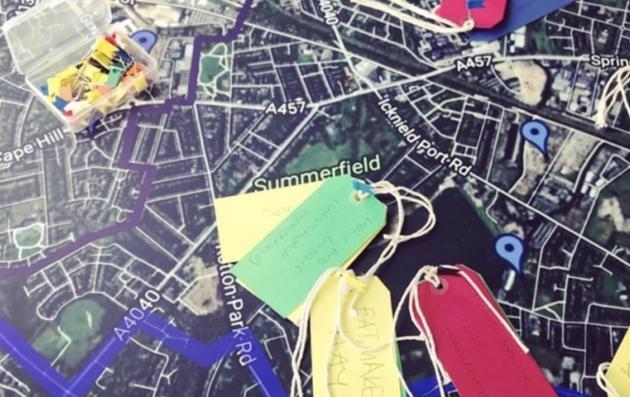
- Social cohesion
Copy linkFacebookXLinkedInEmail1 073 045Summary
Larger capital projects in poor neighbourhoods often do not lead to an improvement in the socio-economic situation of the local population. The USE-IT! project tested an approach that directly links the realisation of larger capital projects - here construction of a new hospital - with the improvement of the socio-economic situation of the population based on the existing local community skills, talents and ideas.
The innovative solution
Despite larger investments, urban regeneration programmes and neighbourhood management the socio-economic situation of those citizens, living in deprived neighbourhoods in Birmingham, could not significantly be improved. Thus, USE-IT! pioneered innovative approaches to inclusive urban development combating poverty in areas of persistent deprivation. The objective was to use physical interventions directly to combat poverty by improving the socio-economic situation of the inhabitants; this was achieved by linking larger, physical interventions with skills and potentials of the inhabitants. The main solutions implemented are: matching people with overseas medical qualifications with job opportunities in the hospital to support employment and better health outcomes in the community, creating a community of social enterprises to support employment and boost social value, as well as developing community research in the local communities to identify and enable better local connections, unlock local skills and insights and link them with opportunities emerging from capital investment.
A collaborative and participative work
Large and diverse partnership of larger public, private and civic organisations working together with local embedded neighbourhood organisations. The partnership was built to complement each other’s specialist skills, knowledge and services, so that no organisation had to reinvent its own work for the purpose of the project and synergies could be achieved. The main target group are the local communities in the ethnically diverse and economically disadvantaged neighbourhoods. The governance/participation structure: Work Packages for each “solution” were set up. Each WP consisted of key partners who collaborated with local community organisations. Each WP was coordinated by WP lead who coordinated activities of their relevant delivery partners.
The impact and results
Due to the large and complex partnership, the communication and information flow between the partners has been a challenge. The Partnership needed time to build trust between the larger and the locally based third sector organisations to enable equitable working relationship. This also demanded a “cultural change” in the larger organisations and a change of the way they worked (change in institutional processes). So far, the main results are 250 migrants with medical skills that are connected with job opportunities in the new hospital, five new consortia of social enterprises, 1 new network of social entrepreneurs, 36 new and 39 established enterprises supported, £240,000 brought into the locality by supporting local organisations to access grants and new contracts, as well as 85 individuals completing ‘Community Research Training’, implementing 24 community research projects and more than £ 300k secured for future work.
Why this good practices should be transferred to other cities?
Urban poverty is one of the main topics of the Urban Agenda for the EU. USE-IT! created a unique model of economic development that is inclusive and results in lasting urban regeneration, by raising aspirations, building community resilience, and connecting people to local resources. It draws on and contributes to the theory of community wealth building.
USE-IT! has demonstrated that creating the links between micro and macro assets is crucial to effective community wealth building, in effect ‘unlocking’ the potential of these assets. To transfer the USE-IT! approach, relevant partners have to learn to identify these assets and support individuals and groups to build on them to link them to the larger capital infrastructure/ investment projects. This demands an existence of a partnership of organisations responsible for the implementation of the larger capital infrastructure with locally based organisations that work with the local communities. All cities and neighbourhoods contain a range of assets. This include physical assets in the form of buildings and green spaces; financial assets in the form of businesses and investments; the financial assets of public, social and private institutions; community assets in the form of voluntary sector groups and social enterprises; and human assets. -
AS-Fabrik
SpainBilbaoBilbao Alliance for smart specialisation in advanced services towards the digital transformation of the industry
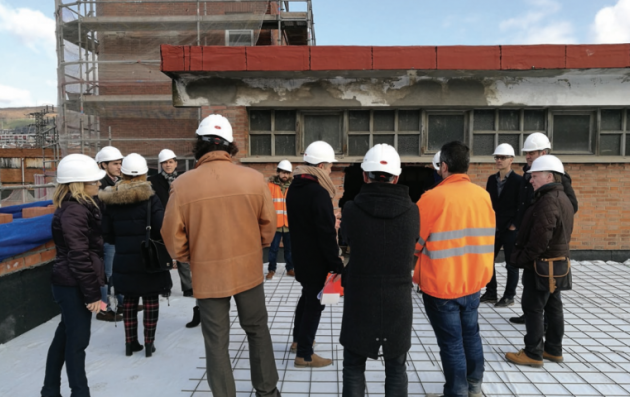
- Local economy
- Participative governance
Copy linkFacebookXLinkedInEmail345 821Summary
The project seeks to increase the competitiveness of advanced services sector of Bilbao (Knowledge intense Business Services – KIBS), preparing current or future workers of the KIBS sector, to acquire the needed skills, to supply digital transformation demands. Bilbao is leading a strategic alliance between businesses and universities, local service providers and entrepreneurs, to shape a collaborative pilot ecosystem based on innovative pillars and hosted in a tailor made space for experimentation and incubation of new services. New education programs for university students, entrepreneurs and professionals addressing the new challenges of the industry 4.0 and digital economy will be tested, while networking actions among the main stakeholders, supported by tailored IT tools, will ensure a good match between demand and supply. New business models will be prototyped to support specialised start-ups that will benefit from a Minimum Viable Product (MVP) test Fab Lab for the market validation of new products/services.
At the end of the project, KIBS providers from Bilbao will have access to AS-FABRIK, the “factory for the creation of advanced services for industry”, gathering in a physical space an integrated kit of tools to shape new products and services for the new industry needs, and reinforce their competitiveness. This new model will lead to create a new generation of young and advanced service providers able to supply the challenging digital transformation demands.The innovative solution
For Bilbao economic renewal is of paramount importance. The city is recovering from the global financial crisis, and despite having an unemployment rate significantly lower than the Spanish average, numbers are still high, and the city now faces the challenge of reinforcing its knowledge-based economy. The AS-FABRIK project is a coin with two sides: on the one side, it promotes “smart specialisation”, aiming to make manufacturing –a traditionally strong sector in the city- and related knowledge intensive business services (KIBS) services more competitive. On the other side, it is an instrument to improve the spatial conditions of the local economy, through the regeneration of the Zorrotzaurre area, a former industrial zone that will be turned into a knowledge-based new part of the city.
City government is a key player when it comes to the creation of favourable spatial conditions in which the local economy can flourish; Bilbao has a key role to play on the labour market, to improve the match between supply and demand, and in retraining the workforce; Also, Bilbao can pursue smart specialisation policies: in close collaboration with local stakeholders, promoting specific promising fields of economic development, in alignment with other policy levels, the private sector and knowledge institutes, which helps to guide investments into the most productive direction.A collaborative and participative work
The main objective of the project will be possible thanks to the design, development and validation of a demonstrative model of a “Factory for the creation of advanced services for the industry” (AS-FABRK), based on a public-private collaborative process that will allow the achievement of the following specific objectives: to identify the mind-term, needs of the manufacturing industry regarding Industry 4.0 concept. Through Research Center and Public Agency; to carry out different interdisciplinary programmes for students, entrepreneurs and professionals so they can acquire the necessary skills to answer to the industry demands. Through University; to build a collaborative working methodology to match the education and expertise needs from the industry with the service providers (individually or in cooperation). Through University and Research Center; to create more and more specialised jobs in Bilbao as a result of the launching of new start-ups and new services. Through Business Support Center and Private Companies
The organisational structure of the Consortium comprises the following Consortium Bodies: the project coordination was done by the MUA who designated project coordinator; the Steering Committee has been responsible for the “major decisions” affecting the implementation and success of the project; the Technical Committee has been in charge of supervising the implementation of the work program and is for taking all decisions related to the operational management.The impact and results
The project has contributed to the development of the advanced services sector of Bilbao in several ways. First, +70 local KIBS have been involved in the definition of Bilbao’s advanced services roadmap, co-creating strategic opportunity spaces to be exploited. From such opportunity spaces, 32 collaborations between SMEs-startups-entrepreneurs were stablished, based on the Partnership Brokering mentoring process, to develop and commercialise new technological services 4.0. Also 36 technological services 4.0 ventures were launched, and 12 of them finally consolidated their services in the market with the support of the Startup Boosting mentoring process. Beyond those numbers, +500 professionals were trained in data cycle technologies (embedded systems, IoT, data science, HMIs) as well as in digital business transformation drivers (e.g. smartisation, servitisation), thus significantly increasing their competences to foster new technological services 4.0 opportunity spaces, collaborations and ventures in the near future.
Why this good practices should be transferred to other cities?
AS-Fabrik has achieved a very significant success in transforming Bilbao. This has been possible due to three essential reasons: (1) Cities can leverage the smart specialisation strategy of their regions, (2) Cities can have an active role in the manufacturing sector, and (3) Cities must create landmarks of their transformation that generate a tangible asset in which to leverage a city-wide transformative process. Thanks to the URBACT project In Focus, Bilbao created a methodology to create its own smart specialisation strategy at a city level aligned with that of our region. One of the Basque Country’s strategic economic sectors is Advanced Manufacturing, and AS-Fabrik is the materialisation of that. –AS-Fabrik postulates a new way of supporting manufacturing industry from an urban perspective, and brings back many industrial concepts to the urban environment. Postindustrial cities are widespread through Europe. During their respective de-industrialisation phases, many cities have expelled the factories from their administrative boundaries, and have turned their backs on the manufacturing sector. Bilbao followed a similar path, but has been working for several years in bringing back the industry to the city, not by bringing back the factories themselves, but rather by grouping training and research; creating a network hub where different companies can collaborate in order to access new markets or create strategic partnerships; and finally creating a startup ecosystem.

